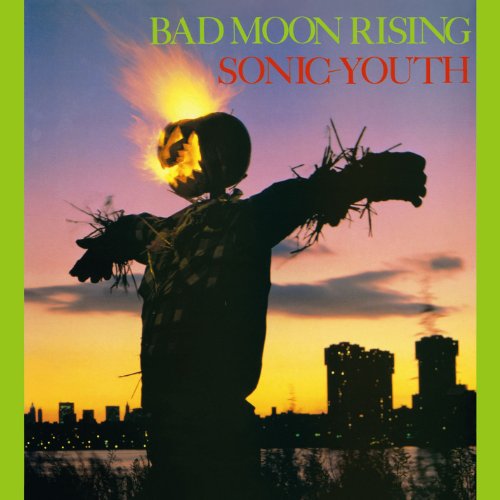
I always thought that this album was a strange way, of sorts, to follow up something like “Confusion is Sex.” But I think where that album captured the live energy of the band, this one captures them in the studio conceiving of an actual “album” album.
The fact that all of the songs blend together the way that they do is no mistake, it was a way for the band to make smoother transitions between songs when they were performed live. This was all in a bid to do away with 5 minute tuning sessions in between songs, as they didn’t have an arsenal of guitars on hand at this point in their careers, so these transitions were created to allow Lee or Thurston a few seconds to tune for the next song. The result of this is an album that is linked, obviously, harmonically and melodically as well as in timbre and mood.
I know that it sounds cheesy or stupid or whatever to foist the extramusical jargon onto an album, but I’m going to do it anyway. This album has always felt like Autumn to me. Yes, of course the cover has a lot to do with it, but there is a coldness on this album that isn’t on their debut full-length. The songs are languid, they wander (not in a bad way, by any means), the band is not afraid to have some cleaner guitar sounds. You can definitely hear them moving towards the songs on “Evol” and “Sister” a lot, especially on a track like “I Love Her All The Time,” a song that starts off innocently enough with Thurston floating out the lyrics with some percussion and bass backdrop underneath minimal guitar sounds, strings bent and echoing off into the distance. It isn’t very long before they are off and running into a wall of noise and (I assume) drumstick-wedged-under-guitar-strings type maneuvers.
But the songs here are better shaped than the ones that appear on “Confusion is Sex.” Where they came up with one idea for each of those songs, this album finds them needing to come up with significantly more material and to find interesting ways to get into and out of those ideas. I think that this is maybe the most important album for Sonic Youth as a group of people developing a writing process. It finds a nice balance between free and fixed forms.
For me, I can’t remember when it was that I first heard this album, or where I was when I was listening to it. I think that that must mean that I came to it a bit later. I do remember, however, that upon hearing it I did not immediately get into it. I didn’t immediately “get” it. I was of the mind that “there’s nothing catchy on this one” (I’m hearing myself say that in a whiny voice. I’m sure that if I said that or though that that I would say or think it in a whiny voice). I wanted the action of “Inhuman” and the noise of “Confusion is Next.” Now that I’m (significantly) older I can truly appreciate how good this album actually is.
I think that one of the reasons that I found it difficult to get into this album initially is that I couldn’t figure out which songs were which. Because they all blended together I couldn’t figure out what part that I remembered came from what song. Obviously, that is all pretty meaningless to me now. Who cares where the songs begin and end? It’s best to listen to an album all the way through anyway.
The 2nd side of the album is broken up a little bit more and has some more experimental (that’s a relative term. So when saying that something that Sonic Youth is doing is “more experimental” is saying something). “Justice is Might” slowly comes together, pulling itself up and staggering into form, the lazy guitar and vocal pulled through time by Bob Bert’s solid, uptempo drumming. That one doesn’t hang around too long, and we still have some equally spacey tracks like “Echo Canyon” and “Satan is Boring.”
The star of the show, though, is “Death Valley ’69.” In my mind it’s their first “hit.” It’s really just a classic Sonic Youth song. Thurston and Lydia Lunch (who is from my hometown) lazily sing over top of each other while the band focuses their energy on maintaining a fantastic amount of tension for extended periods before all is lost in a scratchy howl from Lunch.
Fast-forwarding to now, 2013, I started thinking about what all of this meant from an analysis perspective, what with the linking of the songs and the guitar tunings as sort of symbolizing the modulations from track to track if we are to think of the first several songs as really parts of one larger song. I started doing some initial transcriptions of the opening, and taking a post-tonal approach to it just to see what is going on, if I can. What I am finding is that it isn’t as complex as it sounds, but it’s definitely weird. Weird is good. Weird gives me something to look into, a coil to unwind. The thing is is that I have so many things that I want to look at and that I have started or half-finished that I can’t take on any more extra projects. The sketches that I have down for this album though have all the notes that I need to pick up exactly where I left off whenever I am ready and able to pick it up again.
So, in short, this album went from being something that took me a long time to get into when I was (much) younger, to something that I still listen to today and realize that there is more to it than meets the ear. The next album, though, is when things really start to get good.

